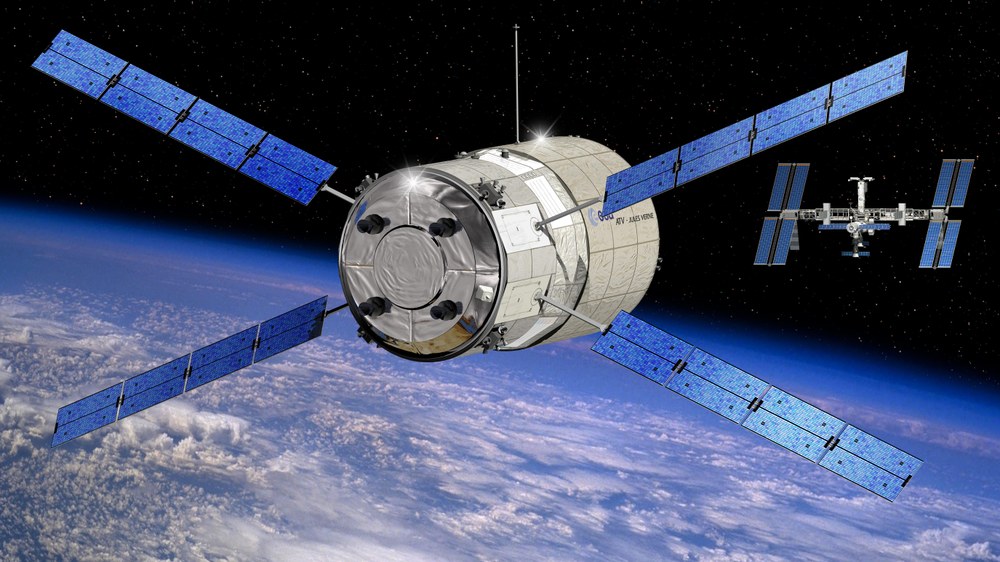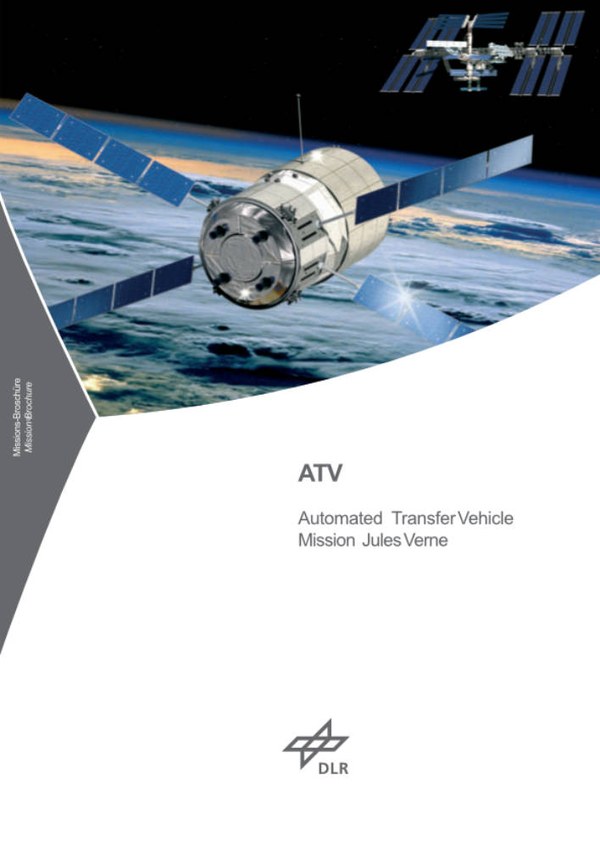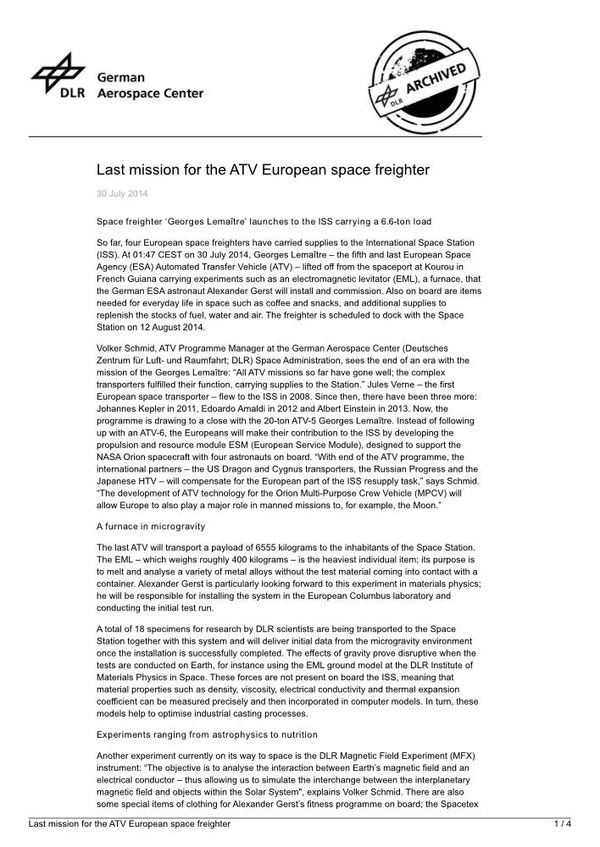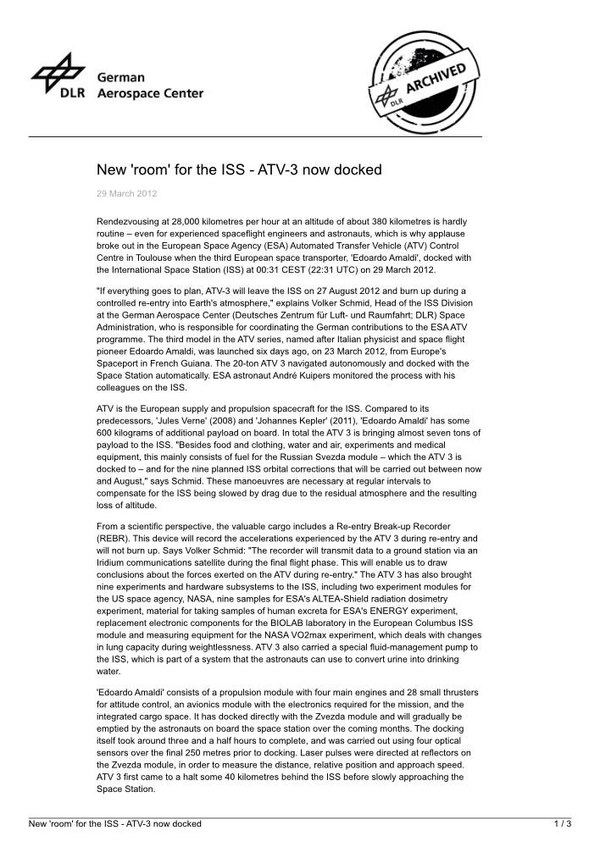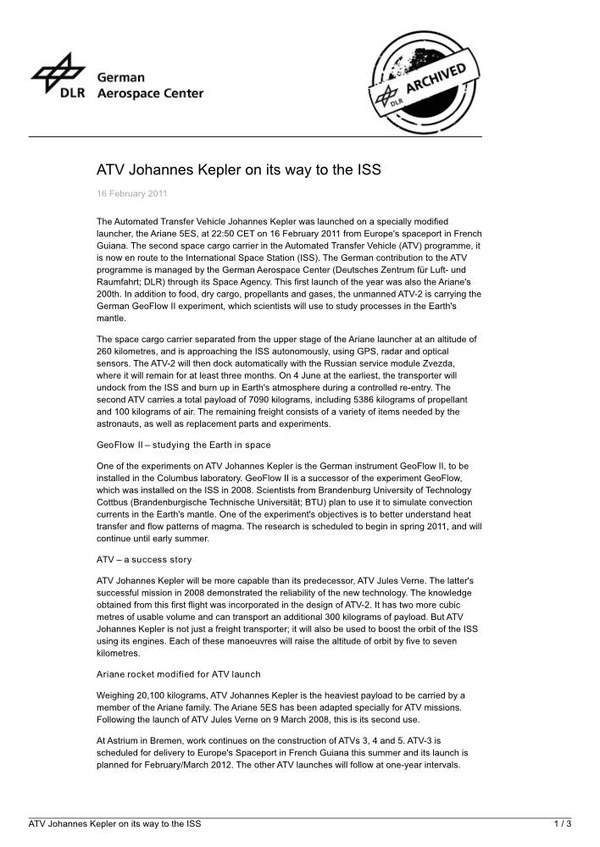ATV – Europe's space transporter for the ISS

Europe received its own access to the International Space Station (ISS) by means of the Automated Transfer Vehicle (ATV) space transporter. As the most complex spacecraft ever built in western Europe, the ATV represented a significant milestone for European space. The German Aerospace Center (DLR) in Oberpfaffenhofen coordinated the communication between the ATV control centres, located throughout the world. In addition, the German re-igniteable upper stage engines of Ariane 5 were tested at the DLR facility in Lampoldshausen.
The first ATV, which commenced its journey to the ISS in March 2008, was named after the French visionary and science fiction author Jules Verne.
Six tonnes of supply freight for the ISS from Europe
The Automated Transfer Vehicle was an unmanned spacecraft that could transport freight to the ISS. It was approximately ten metres long and had a diameter of 4.5 metres. With its solar panels unfolded the ATV had a span of over 22 metres. The total mass of the Jules Verne when loaded and ready to launch was almost 20 tonnes. The net payload capacity of an ATV was approximately six tonnes. The composition of the freight varied from mission to mission. In addition to food and other supply goods the ATVs could also transport scientific equipment, replacement parts and experiments to the ISS.
The vehicle consisted of one section for the drive and the avionics - the electronic steering devices. In addition it had a load-bearing segment, permanently under pressure, in which dry freight is conveyed. This was situated in so-called ISPRs (International Standard Payload Racks), which means it was packed such that it could be easily stored on the ISS. Astronauts entered the pressurised segment when unloading and loading the ATV from the station.
Independent docking at the ISS
All ATVs were launched by a Ariane 5 rocket from Kourou, French Guyana using a re-igniteable upper stage. As a result of the ATV flights, the Ariane 5 became also an element of the logistics plan for the ISS. After separating itself from the upper stage the ATV performed the required rendezvous and docking manoeuvre at the space station by itself, monitored by the ATV control centre in Toulouse.
ATV could correct the space station’s orbit
The ATV docked at the Russian station module Swesda, where it could stay for six months. Similar to the Russian transporter Progress, the ATV could lift the ISS to a higher orbit from here using its main rocket motors. This is necessary from time to time as the space station is continuously slowed down by the resistance of the residual atmosphere and loses around 200 metres a day in orbit height. At the end of the mission the ATV was loaded with up to 6.5 tonnes of waste from the ISS. After undocking from the ISS it re-entered Earth's atmosphere under supervision and finally burnt up over the Pacific.
The ATV flights were the European contribution to supplying the ISS. The greater amount of the ISS operating costs that Europe is to bear on a pro-rata basis were compensated in the form of contributions in kind instead of currency payments to NASA. The total development costs for the ATV amount to approximately 1.35 billion euro. This includes the prototype (ATV 1 Jules Verne at around 1 billion euros), the ground segment, adapting the Ariane 5 launch vehicle, and the launch vehicle itself. German companies were receiving orders to a total value of around €240 million for the Jules Verne project alone.
Worldwide web of control rooms
The ESA's ATV control centre in Toulouse was monitoring the mission in collaboration with the NASA control centres in Houston and Roscosmos in Moscow. DLR's control centre in Oberpfaffenhofen near Munich was also involved as headquarters of the so-called Interconnection Ground Subnetwork. Engineers and technicians worked in three additional control rooms in Toulouse and monitored the ATV. Around 90 minutes prior to the spacecraft reaching the outer ISS safety zone, a two kilometre radius around the station, the responsibility for the mission was transferred to the control centres in Houston and Moscow until such time as the craft docks.
The ATV technology lives on in the ESM
For the Artemis missions to the moon, the European Service Module (ESM), which is based on ATV technology, was developed in Europe for the US Orion spacecraft.


